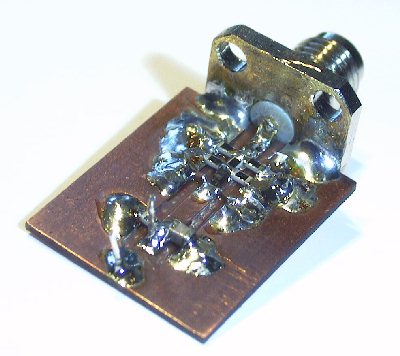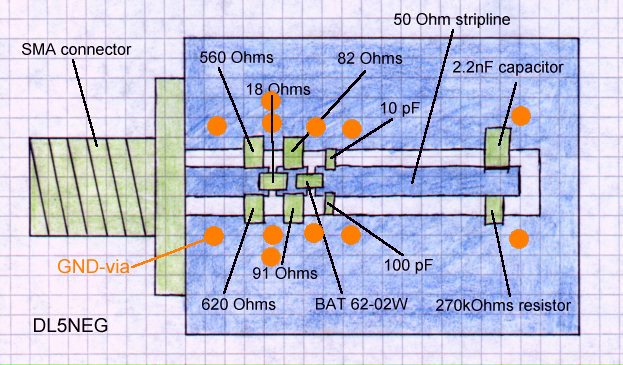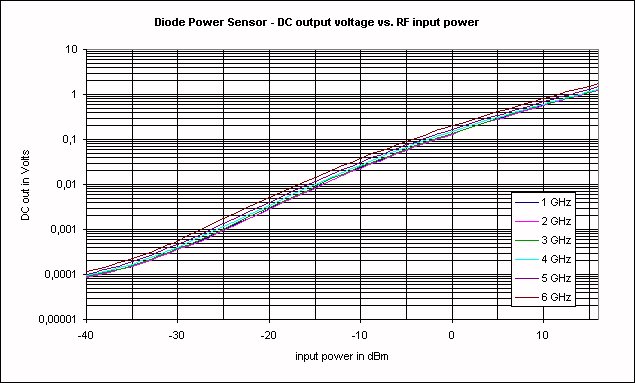
|
|
||
|
\главная\р.л. конструкции\... |
A low-cost high-performance RF-powersensor

A lot of radio amateurs are afraid of building stuff for GHz-frequencys because they fear that they have no chance to measure at these frequencys. Well, the most interessting parameters of a signal are frequency and amplitude. Reasonably priced frequency counters up to 3GHz are widely available now, but RF power meters are still quite expensive. This circuit transforms a RF signal into a DC voltage level which can easily be measured with a low-cost multimeter. Using the graph further down this page you can then determine the RF signal level.
How does it work?
The 5 resistors at the input form a combined 3dB resistive pad and RF termination. The RF diode (BAT62-02W) rectifies the signal, the capacitors on the DC side form a broadband shortcircuit for RF. Having the different capacitance values in the arrangement shown below (the pF very close to the diode) is very important for a flat frequency response.
The mounting drawing below is for scaling. One
unit is one millimeter. The ground vias are very important for a constant frequency
response. The more the better. I have marked my vias in the drawing to give
you an idea where the vias are most important. I have used silver coated copper
wire with 1mm diameter, the thicker the better. I have used FR4 PCB material
with a thickness of only 0.8mm to keep the ground vias short. You can use 1.5mm
material as well but the stripline has to be 2.5mm wide then.

I have built a number of these circuits and the variation from one sample to another is very small. So if you built such a circuit for yourself and stick to the mounting drawing above, you can use my measured values. You can even use BAT62 diodes in different packages for frequenys up to 2.5GHz. Above 2.5GHz it makes sense to use the very small package that I have used to keep the self-resonace frequency high.
Below you can see the DC output voltage that the
circuit gives at certain input power levels at certain frequencys.

As you can see the DC output voltage is practically independent of the frequency up to 3GHz. Above 3GHz there is a slight frequency dependency but using the graph above you can still determine the RF power with high accuracy.
If you feel that the graph does not give you precise enough information you can download the complete table as textfile.